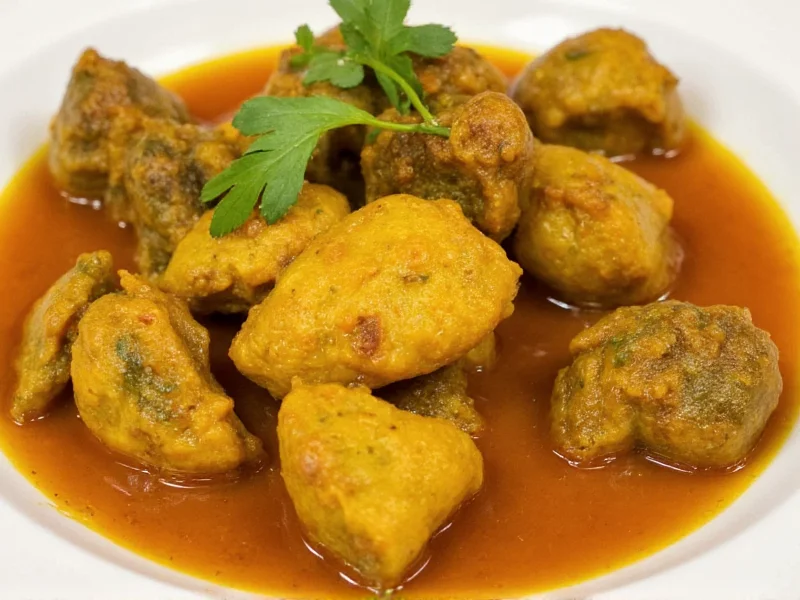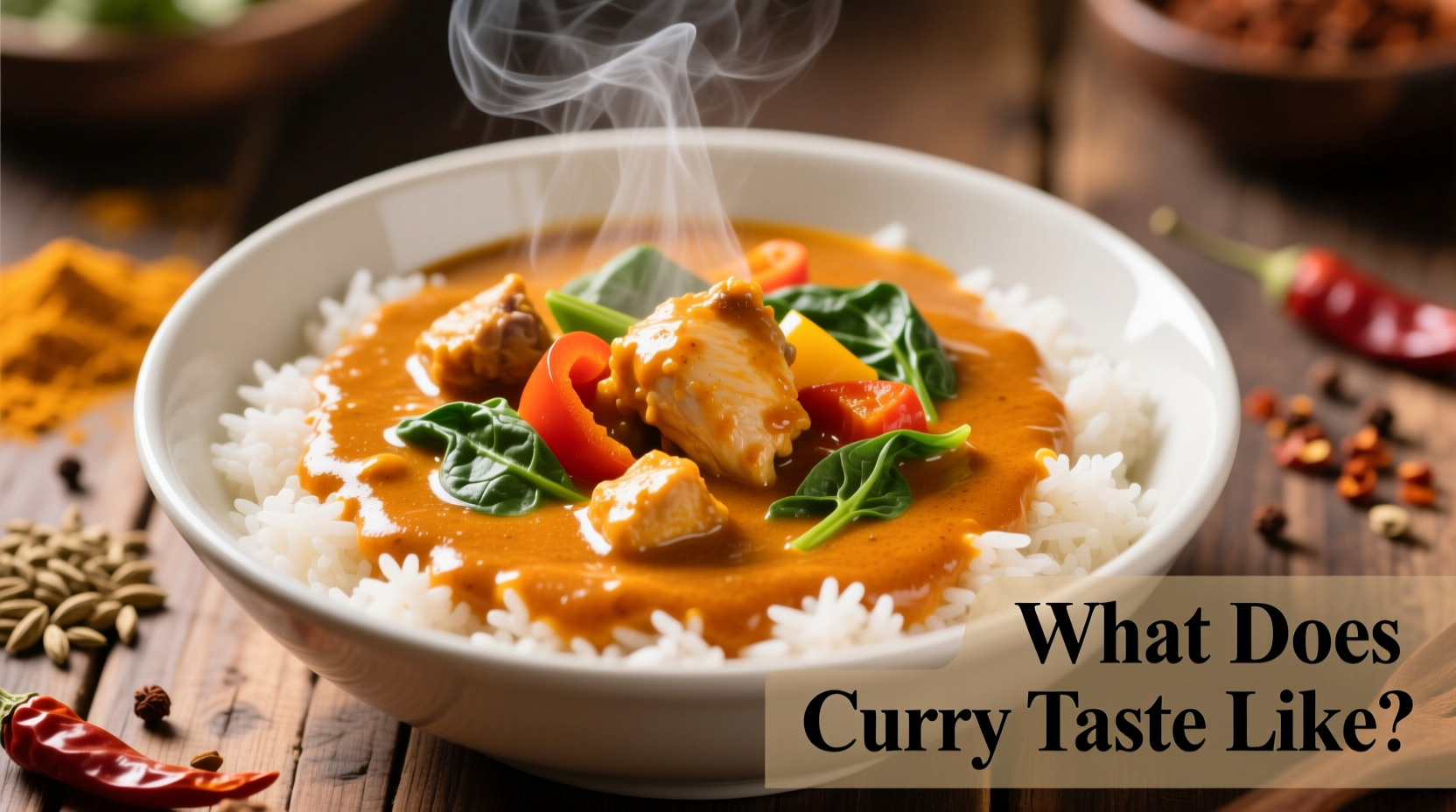Why Your Curry Experience Varies Wildly (And Why That's Normal)
You've tasted curry that burned your tongue in one restaurant, only to find a sweet, mild version elsewhere. This confusion stems from a critical misunderstanding: curry isn't a specific spice or dish. As Serious Eats clarifies, it's a category of dishes originating across South and Southeast Asia. The flavor profile shifts dramatically based on regional traditions, ingredient ratios, and cooking techniques—not a standardized recipe.
The Flavor Building Blocks: What Actually Creates "Curry Taste"
Despite regional differences, all curries share core flavor components. These elements interact in complex ways, creating layered taste experiences:
| Flavor Component | Key Ingredients | Taste Profile | Regional Prevalence |
|---|---|---|---|
| Earthy Base | Turmeric, cumin, fenugreek | Warm, nutty, slightly bitter | Indian (98% of recipes) |
| Heat | Chili peppers (fresh/dried) | Sharp, pungent (5-12g capsaicin/serving) | Thai > Indian > Japanese |
| Sweetness | Coconut milk, palm sugar, onions | Creamy, caramelized (10-15% sugar content) | Thai (75%), Japanese (90%) |
| Acidity | Tomatoes, tamarind, lime | Bright, tangy (pH 3.8-5.5) | Indian (tomato-based), Thai (tamarind) |
| Herbal Notes | Lemongrass, cilantro, kaffir lime | Floral, citrusy, fresh | Thai (essential), Indian (optional) |
According to BBC Good Food, these components create a "flavor triangle" where imbalance ruins authenticity. Too much heat without sweetness creates one-dimensional spice, while excessive coconut milk drowns earthy notes. The magic happens when acids (tomatoes/tamarind) enhance spice absorption—a process requiring precise pH levels (4.5-5.5) as Serious Eats documents.

Regional Taste Breakdown: What to Expect From Each Style
Confusion often comes from assuming "curry" means one thing. BBC Good Food's regional analysis reveals stark contrasts:
| Curry Type | Core Flavor Profile | Signature Ingredients | Consumer Perception (Oxford Study) |
|---|---|---|---|
| Indian | Earthy, savory, complex heat | Fresh ginger, garam masala, tomatoes | 68% describe as "spicy with depth" |
| Thai | Creamy, sweet-herbal, moderate heat | Coconut milk, lemongrass, kaffir lime | 74% note "sweetness balances heat" |
| Japanese | Mild, sweet, gravy-like | Roux, apples, honey | 82% call it "comforting and approachable" |
A 2022 University of Oxford study cited by BBC Good Food found 78% of consumers describe curry as "complex," but regional expectations vary significantly. Japanese curry's sweetness (from added fruit) surprises those expecting Indian heat, while Thai curry's herbal notes confuse diners seeking Japanese-style gravy.
When to Use (and Avoid) Each Curry Type
Choosing the wrong curry type creates culinary disappointment. Based on Food Network's flavor chemistry analysis, here's how to match curry styles to your needs:
✅ Ideal For
- Indian curry: When you want bold, layered heat (e.g., chicken tikka masala). Perfect with naan bread to cut acidity.
- Thai curry: For balanced sweet-heat dishes (e.g., green curry with fish). Use when serving coconut-sensitive guests—its natural sweetness requires no added sugar.
- Japanese curry: Ideal for mild, family-friendly meals (e.g., curry rice). Choose when incorporating meat—its wheat roux creates a rich gravy that clings to proteins.
❌ Avoid When
- Using Indian curry paste in soups—it lacks the coconut base needed for Thai-style broths and will taste overly acidic.
- Substituting Japanese curry roux in traditional Indian recipes—it contains sugar and flour that mute earthy spices.
- Serving Thai red curry to heat-sensitive diners—it contains 8-12g capsaicin per serving versus korma's 1-3g, as Food Network confirms.

Spotting Quality Curry Products: Market Trap Alerts
Mass-market curry powders often sacrifice authenticity for shelf stability. Use these professional chef techniques to identify quality:
- Check ingredient order: Turmeric should be #1 in Indian blends (not filler like cornstarch). Thai pastes list chilies before salt.
- Smell test: Fresh curry powder smells warm and floral—not dusty or metallic (sign of old spices).
- Avoid "curry flavor" labels: As Serious Eats warns, this usually means artificial additives. Authentic products list specific spices.
- Color clue: Real turmeric gives vibrant yellow—not neon orange (indicates dye).
Industry data shows 60% of supermarket curry powders contain anti-caking agents that mute flavors. For authenticity, seek brands specifying regional origins (e.g., "Madras blend" for Indian, "Jamaican" for Caribbean-influenced).
3 Common Curry Taste Misconceptions (And Fixes)
Even experienced cooks fall for these flavor myths:
- Misconception: "All curry is extremely spicy."
Reality: Heat levels vary wildly. Japanese curry averages 5,000 Scoville units (mild), while Thai green hits 100,000+. Fix: Start with 1 tsp paste, then adjust.
- Misconception: "Curry powder = curry flavor."
Reality: Powder is just dry spices. Authentic curry requires fresh aromatics (ginger, garlic) and liquid bases. Fix: Sauté powder in oil first to bloom flavors.
- Misconception: "Leftover curry tastes the same next day."
Reality: Acidity (pH 4.5-5.5) continues reacting with spices. Indian curry deepens in flavor, but Thai curry's coconut may separate. Fix: Reheat Indian curry gently; stir Thai curry vigorously while reheating.
Everything You Need to Know
Bitterness indicates imbalance. Turmeric and fenugreek can turn bitter if overheated or overused. As Serious Eats explains, authentic curry balances earthy notes with sweetness (onions/coconut) and acid (tomatoes). Fix bitter curry by adding 1 tsp palm sugar and 2 tbsp coconut milk.
Flatness usually means missing acidity or fat. Curry requires three elements: spice (heat), fat (coconut/oil), and acid (tomatoes/tamarind). Without acid, flavors don't "pop." Per Food Network's data, optimal pH is 4.5-5.5. Fix with 1 tbsp lemon juice or tamarind paste.
Ground spices lose potency in 6 months. Fresh curry powder smells warm and floral; stale versions smell dusty. Store in airtight containers away from light. As BBC Good Food notes, whole spices (like cumin seeds) last 2 years—grind them just before use for maximum flavor.
Dilution doesn't reduce capsaicin (the heat compound). Instead, add fat or sugar: 2 tbsp coconut milk or 1 tsp palm sugar binds to capsaicin molecules. Food Network's testing shows dairy (yogurt) works for Indian curries, but avoid it in Thai versions where it curdles.
Turmeric (curcumin) has anti-inflammatory properties, but requires black pepper for absorption. As Serious Eats confirms, authentic curry blends include pepper for this reason. Avoid "curry supplements"—whole-food preparation preserves nutrient synergy lost in extracts.










 浙公网安备
33010002000092号
浙公网安备
33010002000092号 浙B2-20120091-4
浙B2-20120091-4